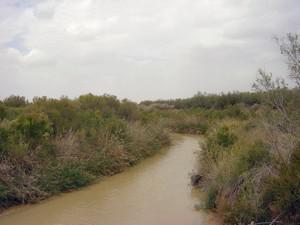Water securityRoll, Jordan, Roll? -- Where the Jordan River stops flowing
A new study argues that Israel’s Jordan River may be a useful case study for the challenges facing stream restoration initiatives around the world. The Jordan River has been ravaged by unbridled population growth and defunct sewage treatment plants, and the river now has only 3 percent of its original flow. “No river enjoys better PR and has worse environmental conditions than the Jordan River,” says a researcher.

A combination of developments drains the River Jordan // Source: theconversation.com
A new study conducted at Tel Aviv University and published in the journal Water Research argues that Israel’s Jordan River may be a useful case study for the challenges facing stream restoration initiatives around the world. The Jordan River has been ravaged by unbridled population growth and defunct sewage treatment plants.
“No river enjoys better PR and has worse environmental conditions than the Jordan River,” said Prof. Alon Tal, Chair of TAU’s Department of Public Policy, who led the research. “The river has a biblical pedigree and the potential to bring about environmental cooperation.”
Tel Aviv University notes that the Jordan River now has only 3 percent of its original flow. It has been decimated by a drop in water supply as a result of population growth, climate change, and contamination from a range of pollution sources. Human wastewater and even fish ponds contribute to the extremely poor water quality.
“While the rehabilitation of the Jordan River is of mutual concern to Israel, Jordan, and the Palestinians, the benefits of this rehabilitation have been extremely difficult to convey to decisionmakers, who are aware of how much they must spend to create them,” Tal said. “When the water evaporates, though, wells run dry and agricultural systems and communities quickly collapse.”
According to Tal’s research, a two-pronged strategy that would both remove pollution sources and increase water flow to revive associated ecosystems requires regional cooperation.
“A restoration strategy requires ensuring a minimum flow and removing all pollution sources,” said Tal. “We would also need to develop a program for ecologically sensitive tourism that will provide critical justification for ongoing commitment to environmental protection by all parties, regardless of their relative levels of prosperity.
“Regional thinking is critical to overcoming the population pressures of scarcity. Only a focused strategy that engages all the countries in the watershed can lead to a sustainable future for this iconic water resource. If we can’t find he political will and economic resources required to revive a small, iconic river like the Jordan, it will be that much more difficult to find politicians and donors who will provide the funds to bring less famous streams back to life.”
A cautionary tale
According to Tal, the case of the Jordan River has direct bearing on water-scarce regions around the world. China alone has some 24,000 rivers that are drying up.
Desalination, the process of removing salts and minerals from saline water to produce water suitable for human consumption or irrigation, has been hailed as a game-changer in countries long suffering from freshwater scarcity and has produced unique opportunities for cooperation in the region. But while desalination facilities have been instrumental in improving water supplies for populations around the world, they have not solved the crisis facing the planet’s rivers and streams, including the Jordan River.
“People are mistakenly euphoric about desalination,” said Tal. “Israel recycles 86 percent of its wastewater and is considered revolutionary in terms of its water management, but even Israel can’t get a handle on the Jordan River. Our study is a response to those who think that if you can desalinate water, you don’t have a water crisis. Let them come to the Jordan River and see for themselves.”
— Read more in Alon Tal, “Will demography defeat river rehabilitation efforts? The case of the River Jordan,” Water Research 111 (15 March 2017): 404–19 (2017) (DOI: 10.1016/j.watres.2016.11.047)
